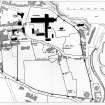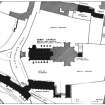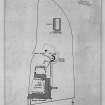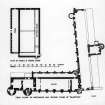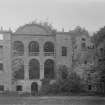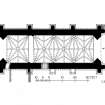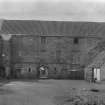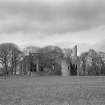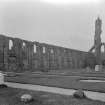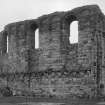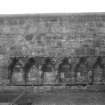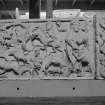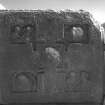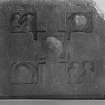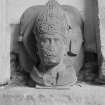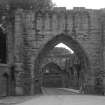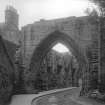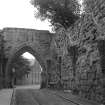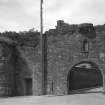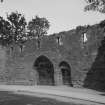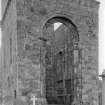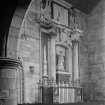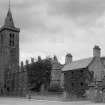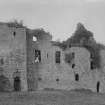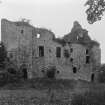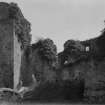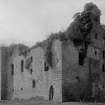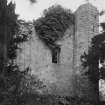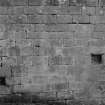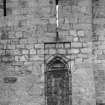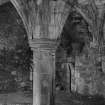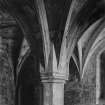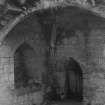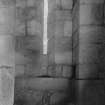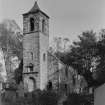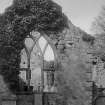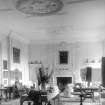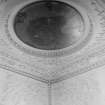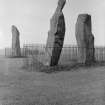RCAHMS County Inventory: Fife, Kinross and Clackmannan
Date April 1925 - August 1932
Event ID 1086867
Category Project
Type Project
Permalink http://canmore.org.uk/event/1086867
Individual descriptive articles from the ‘Inventory of Monuments and Constructions in the Counties of Five, Kinross, and Clackmannan', published by RCAHMS in 1933, were entered into Canmore in June 2020 by HES (GFG). Where the articles exceeded c.1,500 words in length, only the introductory paragraphs were reproduced.
Readers should consult the original text to clarify matters of detail, and to access the related material in the introduction and glossary etc. The entire volume, in PDF format, can be downloaded as Digital File WP 003822 (https://canmore.org.uk/collection/1471211). For a contemporary review of the publication, see W Douglas Simpson, Antiquaries Journal 13 (4), October 1933, 486-8.
The eleventh report (RCAHMS 1933, v-vi) is reproduced here to provide a further measure of the context and scope of the survey, which extended over some 7 years:
"We, Your Majesty's Commissioners, appointed to make an Inventory of the Ancient and Historical Monuments and Constructions connected with or illustrative of the contemporary culture, civilisation, and conditions of life of the people in Scotland from the earliest times to the year 1707, and to specify those which seem most worthy of preservation, humbly present to Your Majesty this our Eleventh Report. The Inventory deals with the monuments and constructions in the counties of Fife, Kinross, and Clackmannan, and appended to the Report is a list of those which, in the opinion of Your Commissioners, seem most worthy of preservation. The list is divided into two groups: (a) those which appear to be specially in need of protection, and (b) those worthy of preservation but not in imminent risk of demolition or decay.
We tender to Your Majesty our respectful thanks for the gracious message which accompanied Your Majesty's acceptance of the volume embodying our previous Report with Inventory of Monuments in Midlothian and West Lothian.
Your Commissioners desire to acknowledge the ready co-operation of owners of lands and historic buildings in the area under review. They would also express their thanks to Mr. Brian C. Clayton for a number of photographs; to the Society of Antiquaries of Scotland for the use of blocks and other facilities; and, for special assistance in various ways, to the Earl of Crawford and Balcarres, Sir Ralph Anstruther of Balcaskie, Dr. Francis J. Grant, Lyon King of Arms, Professors Rose, Baxter, and Waterston of St. Andrews, Professors Kennedy and Calder, Edinburgh, Professor Ritchie, Aberdeen, the Rev. Dr. Stephen, Inverkeithing, the late Dr. Hay Fleming, Miss Longhurst of the Victoria and Albert Museum, London, Mr. George B. Deas, architect, Kirkcaldy, Mr. J. F. Matthew of Messrs. Lorimer & Matthew, Edinburgh, Mr. Reginald Fairlie, architect, Edinburgh, Mr. Andrew T. Richardson, Kirkcaldy, Dr. Mears, Leuchars, Mr. J. M. Mitchell, County Clerk, Fife, Mr. D. A. R. Cuthbert, County Clerk, Kinross, Mr. E. A. Urquhart, Edinburgh, Wing-Commander Insall, R.A.F., Donibristle, Dr. J. Graham Callander, Director of the National Museum of Antiquities, Mr. J. Wilson Paterson of Your Majesty's Office of Works, Mr. J. S. Richardson, Your Majesty's Inspector of Ancient Monuments for Scotland, and other willing helpers.
In the present volume three counties are treated together in consideration of their occupying a peninsular area, which results in their having much local history in common. The district under survey has been greatly affected by the extensive reclamation of land from the wild within late historic time, and also by development of the mining industry. These operations have necessarily involved the destruction of much prehistoric material, the previous existence whereof is vouched for, in a number of cases, by printed records. Nevertheless, enough material remains to illustrate the earliest occupation of the area, some of it indeed of special value.
In common with the rest of Scotland this district has suffered grievously in the destruction of ancient ecclesiastical buildings. In Fife alone there were eleven monastic establishments, including houses of friars, among the more important being the Augustinian Priory of the metropolitan see of St. Andrews and the Benedictine Abbey of Dunfermline with its early and late association with Royalty. Fortunately, part of the house of Grey Friars at Inverkeithing has escaped the ruthless ruin that has obliterated so many noble buildings. As regards secular architecture Fife, since the sixteenth century, has been remarkable for the number and distinction of its baronial residences, whereof a considerable number still remain and are duly recorded in the Inventory.
Noteworthy, also, are the structural survivals in the ancient royal burghs in Fife, of which so many once flourished on the southern coast as to give it a distinctive pre-eminence.
Your Commissioners wish to record their sense of the loss sustained through the death of Dr. Thomas Ross, an original member of the Commission, upon whose counsel as an erudite architect they had frequent occasion to rely. They welcome the appointment of Mr. James Archibald Morris, R.S.A., F.R.I.B.A., to fill the vacancy.
Your Commissioners have further to deplore the loss of an esteemed colleague in the person of Professor Gerard Baldwin Brown who, after taking a full share in preparing the present Report, died on 12th July 1932. He had served on the Commission since its original appointment in 1908, and, as Professor of Fine Art in the University of Edinburgh, was specially qualified to take a useful part in its work.
HERBERT MAXWELL, Chairman, THOMAS H. BRYCE, ALEXR. O. CURLE, GEO. MACDONALD, NOVAR, JAMES CURLE, JAMES A MORRIS, W. MACKAY MACKENZIE, Secretary
EDINBURGH, 11th October 1932."









































































































